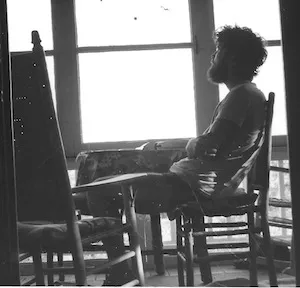Jim Anderson wins the Distinguished Mycologist Award

In Jim's Own Words..
I started my undergraduate studies first in physics and then in biomedical sciences at Brown University in 1970, but soon decided that botany, especially cryptogamic botany, was more my style and I transferred to the University of Rhode Island.
My mycological career began when I took the wonderful, hands-on, mycology course offered by Roger D. Goos at URI. After graduation, I spent a year as a research technician, again at Brown University, studying the neuropharmacology of trematode worms. In 1976, I started my Ph.D. program with Robert C. Ullrich at the University of Vermont. Working on mating systems and speciation in Armillaria in Vermont was a heady time, one of my most satisfying periods in science. In addition to my work in the field and at the bench, I corresponded with many established mycologists, who contributed collections and advice, and I had a fruitful long-term collaboration with mycologist Kari Korhonen in Helsinki. As a graduate student, I also spent a summer, a mini-sabbatical, with Robert L Shafer at the University of Michigan Biological station learning about the full range fungi in the field. There I met my future wife and mycological collaborator, Linda Kohn.
Although long-term prospects for academic appointment looked somewhat bleak from my perspective as a student, I was a blithe spirit immersed in the thrill of the science and didn’t much care about the abstraction of the future. Much to my surprise, I landed a job as a faculty member at the University of Toronto in 1980 – very “green” at the age of twenty seven, with no postdoctoral experience behind me.
Over the years at Toronto, I had wonderful students, postdocs, research assistants, and a raft of undergraduate researchers. The most significant research transition in my career was in combining my interests in evolutionary biology with my innate tendencies as an experimentalist. The leap from basidiomycete mating systems and population biology to experimental evolution in yeasts was therefore natural for me and incredibly exciting. As the experimental tools available became better and better, the questions became even more accessible and compelling. I am truly delighted by this award from the MSA, which I regard as my home base in science.
